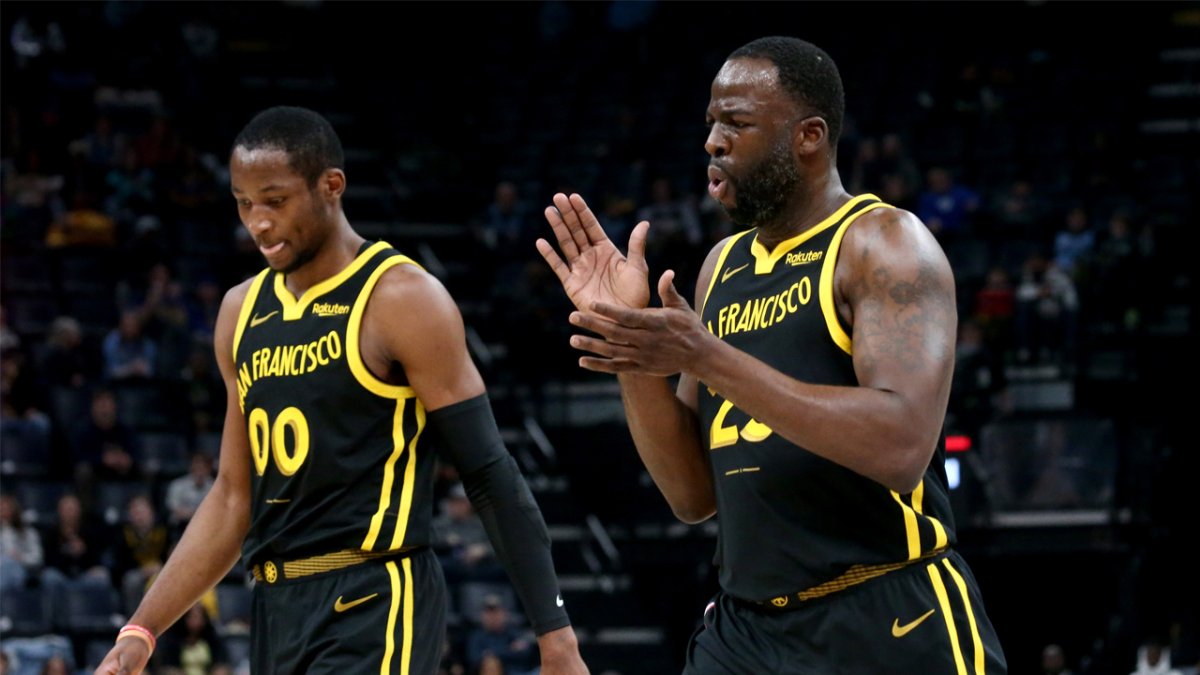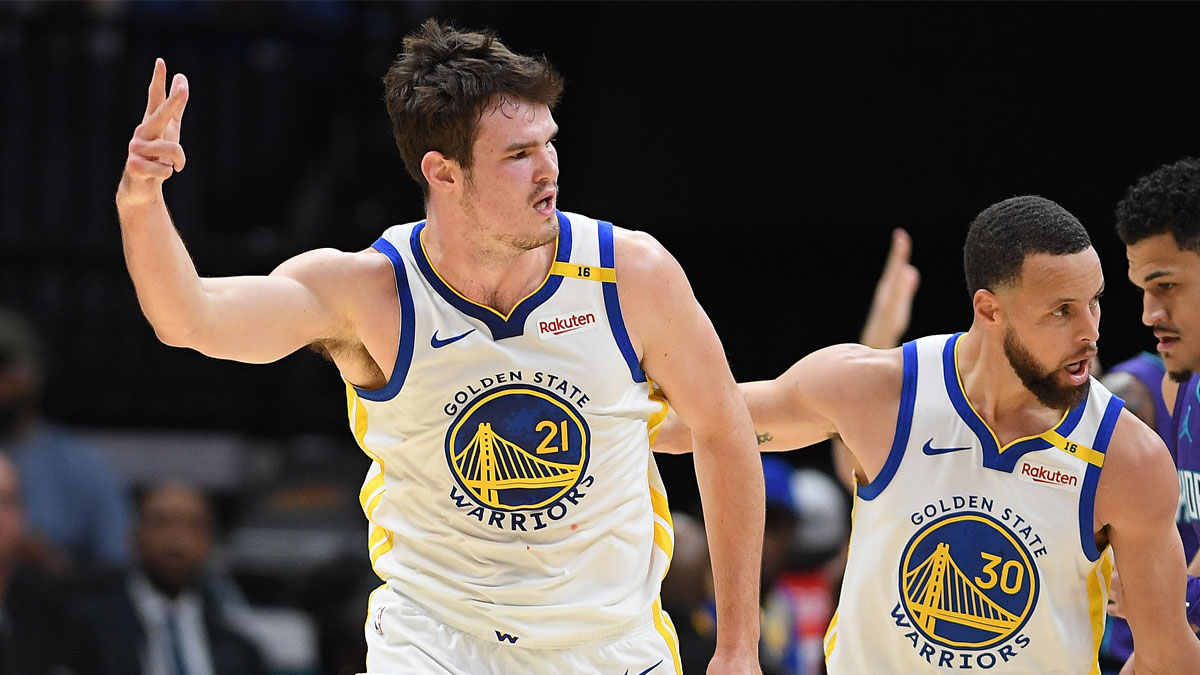If you saw the title of this article and clicked, first and foremost, thanks for doing that. And in doing so, you’re likely in a position where you’re looking for tips on how to approach your first fantasy basketball experience. Whether you’re playing amongst friends for bragging rights or competing for cash prizes, fantasy basketball can make the season more exciting and enjoyable if played properly.
The goal of this article and the fantasy basketball content we’ll be releasing over the next month is to put you in a position to have a successful season, whether you’re an expert juggling multiple teams or a novice looking to have a fun first experience.
Advertisement
The NBA regular season begins on October 22 with a fun doubleheader that can be seen on NBA and Peacock. Without further ado, here are some tips that could prove valuable as you jump into fantasy basketball.
NBA: Playoffs-Denver Nuggets at Oklahoma City Thunder
Fantasy basketball mock draft analysis 2025-26: Is Nikola Jokic the top pick?
Getting the top pick in your draft is a great advantage, but how should you build the rest of your team?
1. Read the rules before entering the league
Last year’s intro article strongly suggested that the rules should be read before the draft. While that is true, the rules should be discussed by all involved parties when creating the league, with newcomers then deciding whether or not they want in. How many teams will be in the league? How many IL (or IL+, which is preferred for flexibility reasons) will you have to work with? While missing a rule in a casual league that doesn’t have money on the line can be frustrating, the leagues in which you are playing for money are where feelings can get hurt because someone did not pay attention. Save yourself the headache and read the rules early. If anything needs to be addressed, that can be done before someone joins a league they ultimately decide they don’t want to participate in.
Advertisement
2. Determine what kind of draft setup you prefer
We’ll get into the specifics regarding league types a little later, but the first step is to decide how you prefer to go through the draft process. The simplest way to select your team would be through a snake draft. For example, in a 12-team league, the picks will be 1 through 12 in the odd-numbered rounds, and 12 through 1 in the even-numbered rounds. So, if you’re on the front or back end of the draft order, your chances of landing the players you’re targeting may be better than if you were stuck with a mid-round pick.
Also, it should be noted that some leagues include a reversal every two rounds. That would flip the draft order every two rounds; the manager with the 12th pick would move to the top of the order in the third round, and the order would return to its original setup in the fifth, and so on. For snake drafts, you can either knock it all out in one sitting or go with an online slow draft, which gives managers more time and can run over multiple days. In this case, set up your email alerts so the site hosting the draft will inform you when you’re on the clock.
Try not to be the person who complains about the pace of a slow draft. You know what you signed up for.
Advertisement
Don’t want to deal with a snake draft? Well, there’s also the salary draft option. Managers are given a salary cap in this setup, with the default number being $200. An order to nominate players will be crafted, and each manager can nominate a player for bid. Two things about the salary draft option. First, they tend to go longer than snake drafts, so if you have patience issues, this may not be your best choice. Two, if you’re doing an in-person draft, you must pay attention. And it may not be a bad idea to devise a penalty for those who commit the offense of nominating a player who is already off the board.
3. Determine what kind of league you prefer to play in
Beyond the draft process, do you want to compete in a category league (head-to-head or rotisserie) or a points league? For the latter, point values are assigned to each category. In Yahoo! points leagues, the default scoring is as follows:
Points: 1
Advertisement
Rebounds: 1.2
Assists: 1.5
Steals: 3
Blocks: 3
Turnovers: -1
For those with some experience in daily fantasy, you’ll find that the scoring system is similar. While this note is third on the list, your answer to the question is just as important as the draft type, if not more. In category leagues, some may find it more challenging to bounce back from a slow start in rotisserie than in head-to-head.
4. Do your research before draft day
The type of league you’re competing in will impact how you approach draft day. There’s no shortage of preseason draft information on the internet, whether you’re looking for the written word or an audio (or video) podcast. While there is the danger of loading up on too much information while preparing for a draft, the positives outweigh the negatives. And that surplus of available information is why the next point is vital to fantasy success.
Advertisement
5. Participate in some mock drafts, especially if competing in a salary league
Whether you’re participating in mock drafts with people you’re likely to compete with or strangers, this practice is invaluable, regardless of the league you’ll be competing in. Not only is this a good way to see how other managers perceive players, but it’s also helping in dealing with the variables of a draft. Someone used a first-round pick on oft-injured Joel Embiid or LaMelo Ball? That may force you to change your approach, and it’s good to have prior experience to fall back upon, even if it’s only a mock draft.
Mock drafts are highly valuable for those competing in salary leagues. How much are managers willing to spend on a Nikola Jokić or Shai Gilgeous-Alexander? And how do you feel most comfortable spending your money? Do you go with a “stars and scrubs” roster build or spread your money out more evenly? While what we see in mock drafts doesn’t always align with the “real thing,” it’s good to have some experience before the big day.
NBA: Playoffs-Minnesota Timberwolves at Los Angeles Lakers
Fantasy basketball mock draft analysis 2025-26: Where to go after drafting Luka Doncic?
Advertisement
Rotoworld fantasy basketball writer Raphielle Johnson recently participated in a 16-team mock draft. What should you do after drafting Luka?
6. Set aside time to set your lineups once the season begins
OK, you’ve picked your team for the upcoming season. Next, do your best to set aside time each day to craft your active rosters for that night’s games if your league allows for daily adjustments. Not missing that deadline is critical for managers in leagues that lock lineups for the week before Monday’s games. In this instance, you’ll want to pay close attention to the number of games a player is scheduled to play that week. Unless they’re a superstar, most players will be of limited value if their team only plays twice. A good approach to setting your lineups is to do it early in the morning, then reevaluate late afternoon to account for any potential absences due to injury or suspension.
7. Don’t hesitate to make a change in strategy in-season
Turning over your entire roster after a slow start will be difficult. However, one should not be afraid to shift if things aren’t working. Maybe you need a major trade to shake things up. If so, assess the free agent market and players your opponents may have listed as available. When putting together a trade offer, aim to create a deal that benefits both sides. The last thing you want is to earn a reputation for attempting to fleece the other managers. And that late-round pick who may not be panning out? Don’t hesitate to drop them for other options, as those players tend to be low-risk, high-reward.
Advertisement
8. Don’t try to sabotage the league, especially if there’s money involved
Remember, fantasy basketball is supposed to be fun. Don’t be the person who violates league rules or gets mad and dumps their best players onto the waiver wire once their team is no longer in contention for a playoff spot, especially if money is involved. Relationships don’t need to become strained or severed over fantasy sports. And if losing money is something you can’t handle, either compete in a league with a lower entry fee or no fee at all. There’s nothing wrong with taking that approach.





